Scroll for prep

Please wait…
This video is having trouble loading. You may have lost your Internet connection.
Step 1: Click to Reload this page
Step 2: Click to
Try our other video player
Step 3: Contact your teacher if trouble persists.
Or,
dismiss this message.

Please wait…
This video is having trouble loading. You may have lost your Internet connection.
Step 1: Click to Reload this page
Step 2: Click to
Try our other video player
Step 3: Contact your teacher if trouble persists.
Or,
dismiss this message.

Please wait…
This video is having trouble loading. You may have lost your Internet connection.
Step 1: Click to Reload this page
Step 2: Click to
Try our other video player
Step 3: Contact your teacher if trouble persists.
Or,
dismiss this message.

Please wait…
This video is having trouble loading. You may have lost your Internet connection.
Step 1: Click to Reload this page
Step 2: Click to
Try our other video player
Step 3: Contact your teacher if trouble persists.
Or,
dismiss this message.

Please wait…
This video is having trouble loading. You may have lost your Internet connection.
Step 1: Click to Reload this page
Step 2: Click to
Try our other video player
Step 3: Contact your teacher if trouble persists.
Or,
dismiss this message.
Step
01/09
01/09
To solve a mystery, you need to look for clues. Let’s start by looking
at the two cars. Discuss:
at the two cars. Discuss:

Please wait…
This video is having trouble loading. You may have lost your Internet connection.
Step 1: Click to Reload this page
Step 2: Click to
Try our other video player
Step 3: Contact your teacher if trouble persists.
Or,
dismiss this message.
Step
02/09
02/09
Here’s what we noticed. Noah’s car is in the sun and Leo’s car is in the
shade. Discuss:
shade. Discuss:

Please wait…
This video is having trouble loading. You may have lost your Internet connection.
Step 1: Click to Reload this page
Step 2: Click to
Try our other video player
Step 3: Contact your teacher if trouble persists.
Or,
dismiss this message.
Step
03/09
03/09
Here’s what we think. Sunlight warms things up. Noah’s car got hot
because it was in the sun. Leo’s car stayed cool because it was in the
shade. Discuss:
because it was in the sun. Leo’s car stayed cool because it was in the
shade. Discuss:

Please wait…
This video is having trouble loading. You may have lost your Internet connection.
Step 1: Click to Reload this page
Step 2: Click to
Try our other video player
Step 3: Contact your teacher if trouble persists.
Or,
dismiss this message.
Step
04/09
04/09
To find out if Leo’s car would get hot in the sun, Leo and Noah traded
parking places. Now Leo’s car is in the sun. Discuss:
parking places. Now Leo’s car is in the sun. Discuss:

Please wait…
This video is having trouble loading. You may have lost your Internet connection.
Step 1: Click to Reload this page
Step 2: Click to
Try our other video player
Step 3: Contact your teacher if trouble persists.
Or,
dismiss this message.
Step
05/09
05/09
Leo and Noah decided to put marshmallows and chocolate in both
cars. Then they could compare what happened in the sun and in the
shade. Discuss:
cars. Then they could compare what happened in the sun and in the
shade. Discuss:

Please wait…
This video is having trouble loading. You may have lost your Internet connection.
Step 1: Click to Reload this page
Step 2: Click to
Try our other video player
Step 3: Contact your teacher if trouble persists.
Or,
dismiss this message.
Step
06/09
06/09
After one hour, Noah and Leo checked the car in the sun. To see if the
marshmallow had melted, they tried the Squish Test. Noah squeezed
the marshmallow to see if it would squish. Watch this!
marshmallow had melted, they tried the Squish Test. Noah squeezed
the marshmallow to see if it would squish. Watch this!

Please wait…
This video is having trouble loading. You may have lost your Internet connection.
Step 1: Click to Reload this page
Step 2: Click to
Try our other video player
Step 3: Contact your teacher if trouble persists.
Or,
dismiss this message.
Step
07/09
07/09
Then Noah and Leo checked the car in the shade. Once again, they
tried the Squish Test. Watch this!
tried the Squish Test. Watch this!

Please wait…
This video is having trouble loading. You may have lost your Internet connection.
Step 1: Click to Reload this page
Step 2: Click to
Try our other video player
Step 3: Contact your teacher if trouble persists.
Or,
dismiss this message.
Step
08/09
08/09
The marshmallow from the hot car made a treat that’s called a
s’more. Usually, people roast marshmallows in the fire to make
s’mores. Noah and Leo have invented a new way to make s’mores!
s’more. Usually, people roast marshmallows in the fire to make
s’mores. Noah and Leo have invented a new way to make s’mores!

Please wait…
This video is having trouble loading. You may have lost your Internet connection.
Step 1: Click to Reload this page
Step 2: Click to
Try our other video player
Step 3: Contact your teacher if trouble persists.
Or,
dismiss this message.
Step
09/09
09/09
You solved the melty mystery! The Sun heats things up and warms
the Earth. It also warms up marshmallows! Have fun and stay curious!
the Earth. It also warms up marshmallows! Have fun and stay curious!


Sun
1 of 11
the large ball of light in the sky during the day

sunlight
2 of 11
light from the Sun
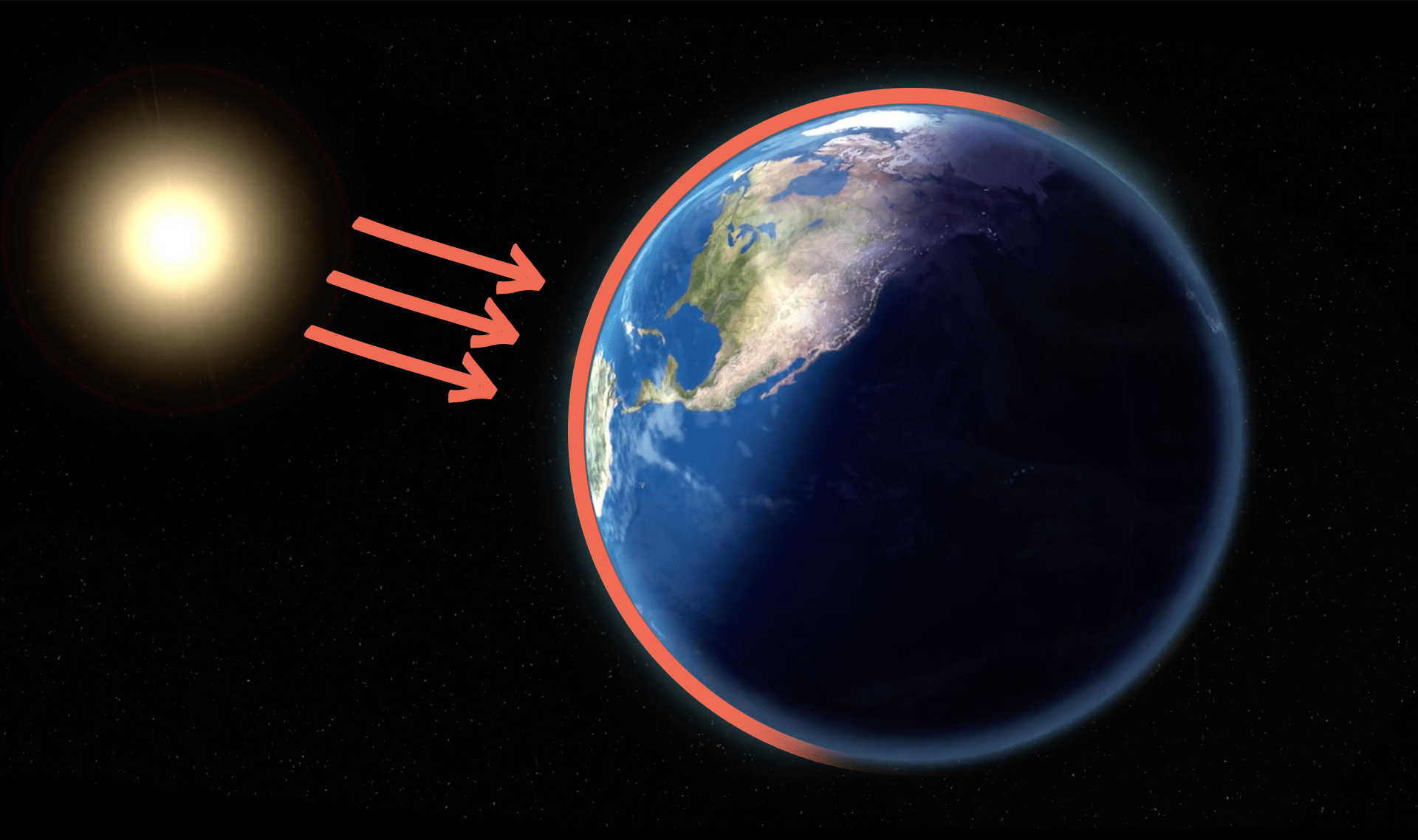
warm
4 of 11
to make something hotter
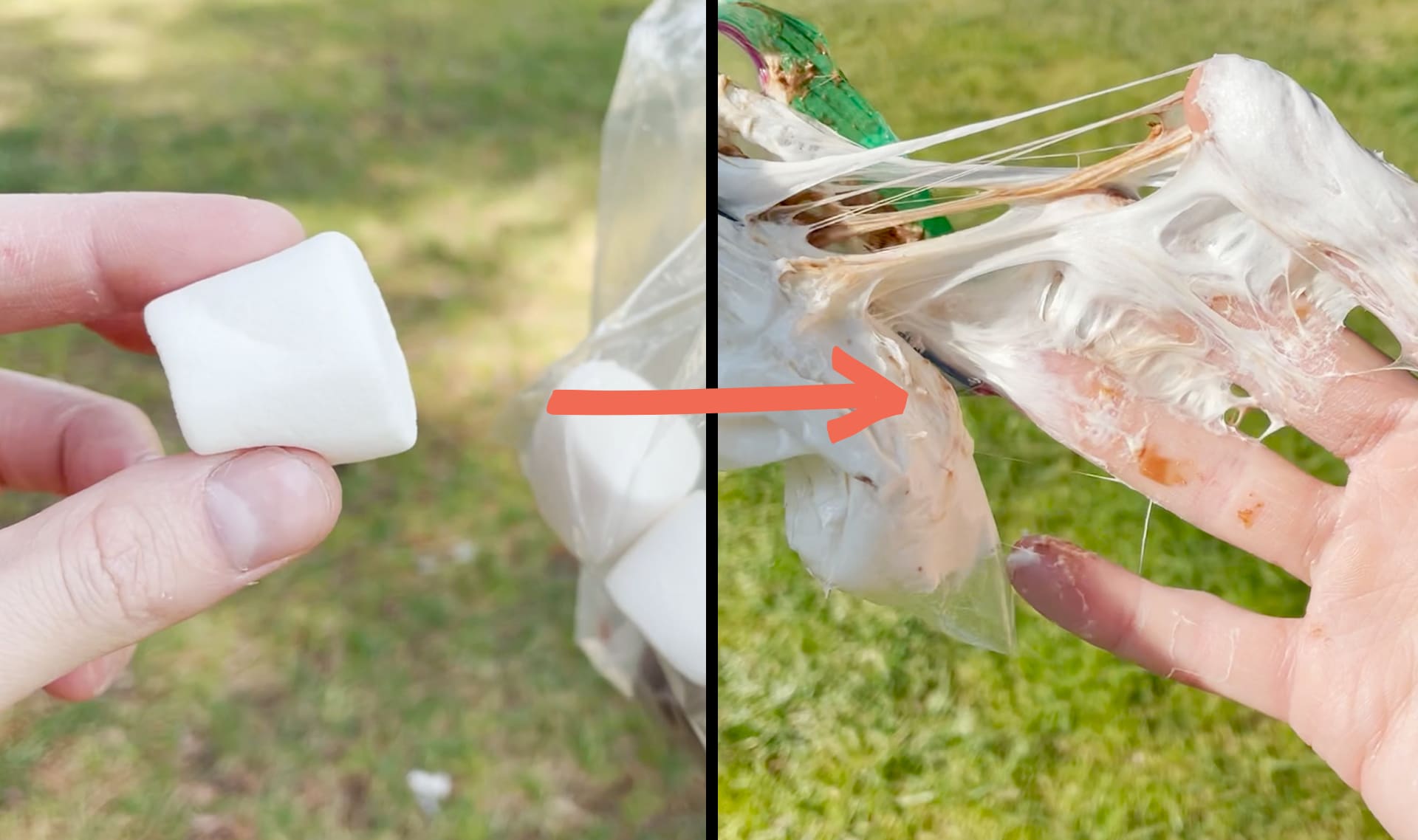
melt
5 of 11
when a solid turns into a liquid, such as when ice melts into water

summer
6 of 11
one of the four seasons, the warmest season in some places
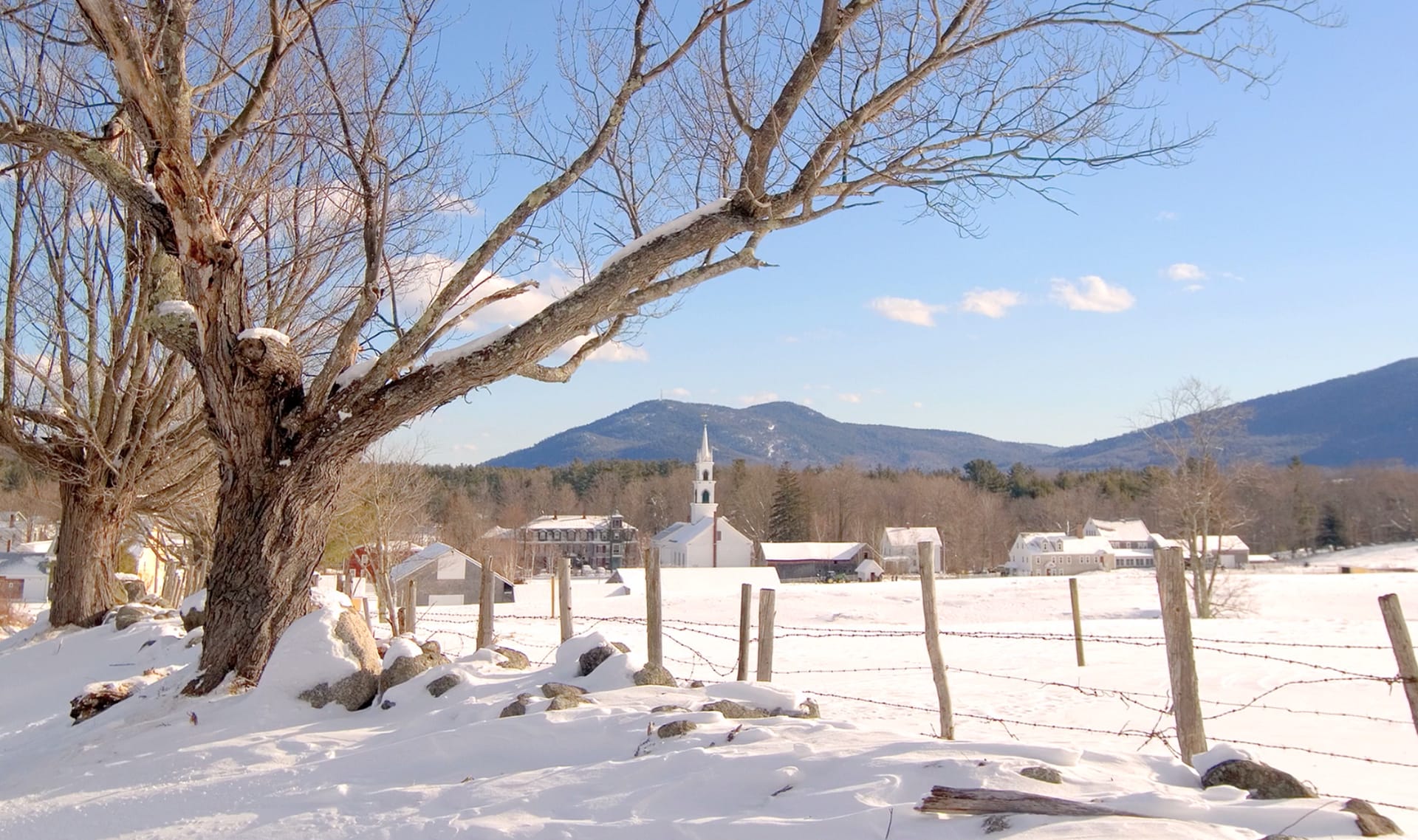
winter
7 of 11
one of the four seasons, the coldest season in some places
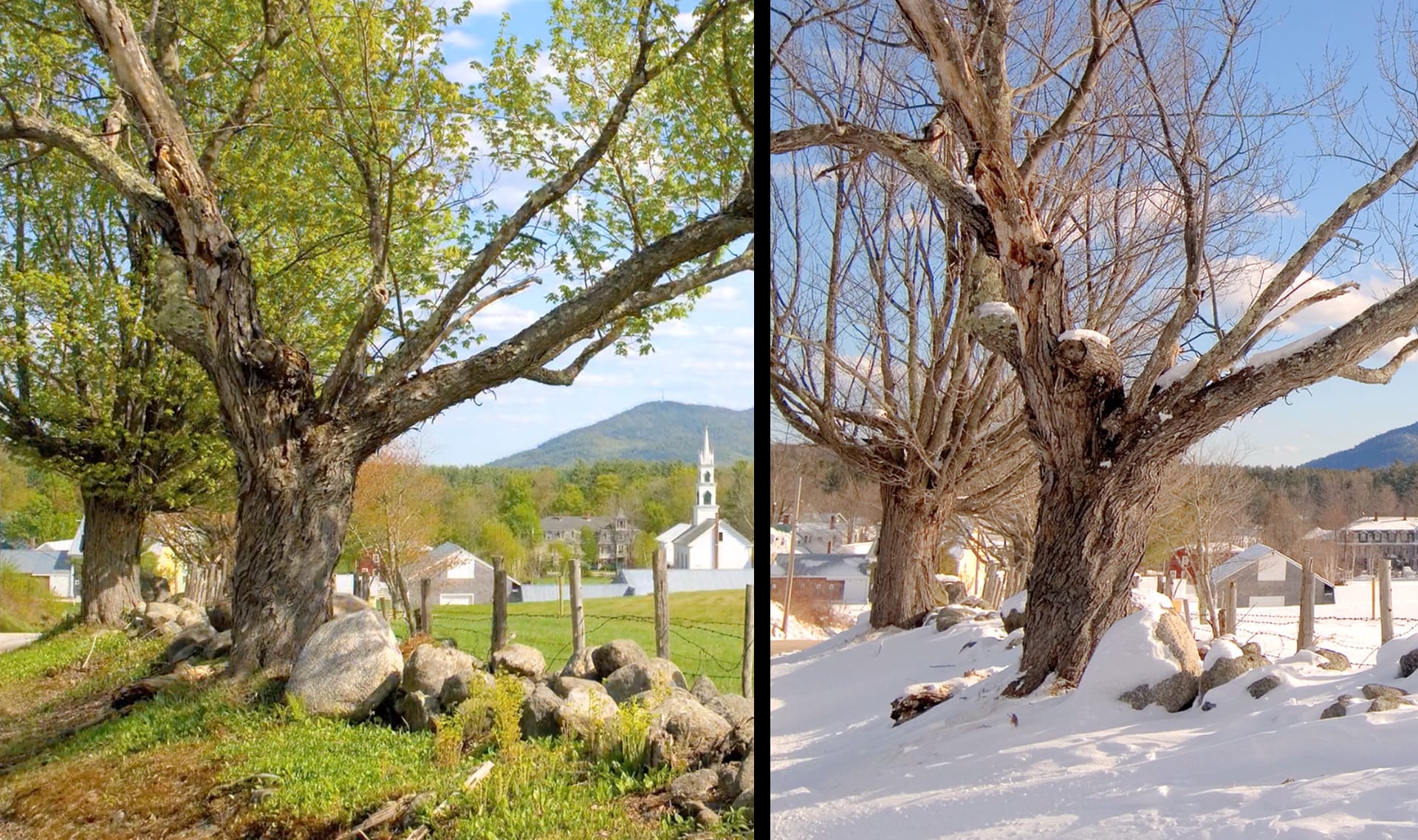
weather
8 of 11
what the air is like at a particular time and place

Please wait…
This video is having trouble loading. You may have lost your Internet connection.
Step 1: Click to Reload this page
Step 2: Click to
Try our other video player
Step 3: Contact your teacher if trouble persists.
Or,
dismiss this message.
snow
9 of 11
solid water that falls from the sky when it's very cold outside
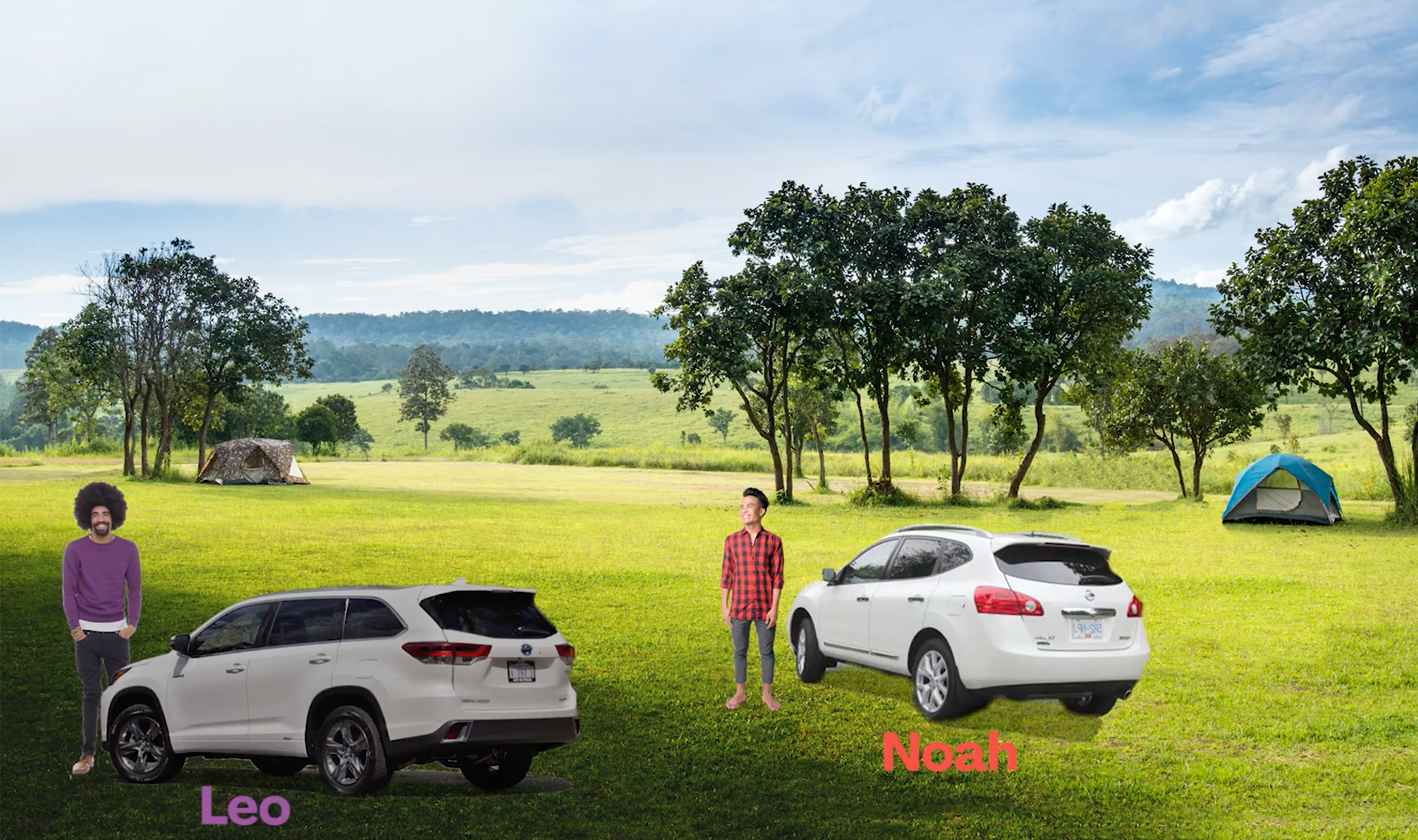
compare
10 of 11
to notice what is similar and what is different between things
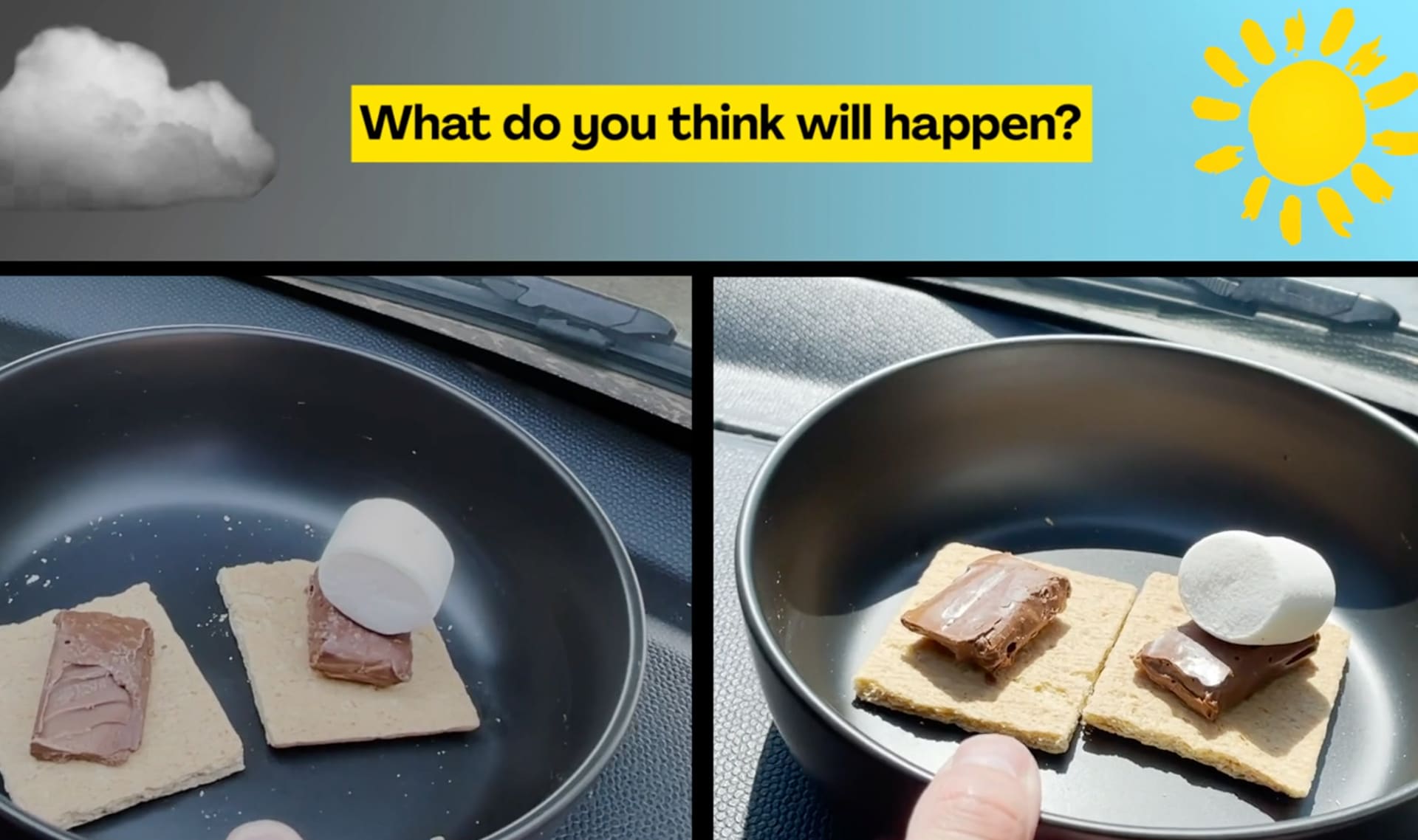
investigate
11 of 11
to figure out the answer to a question or to understand how something works



